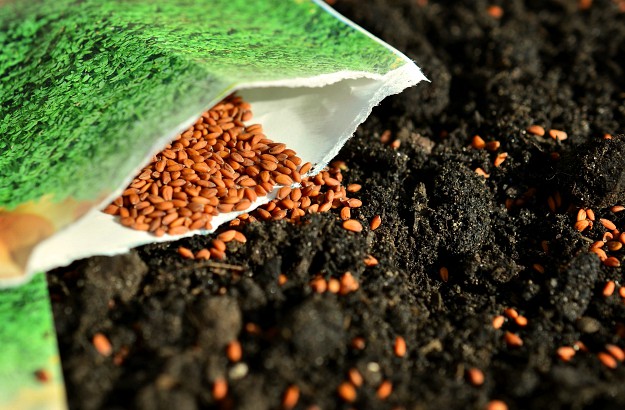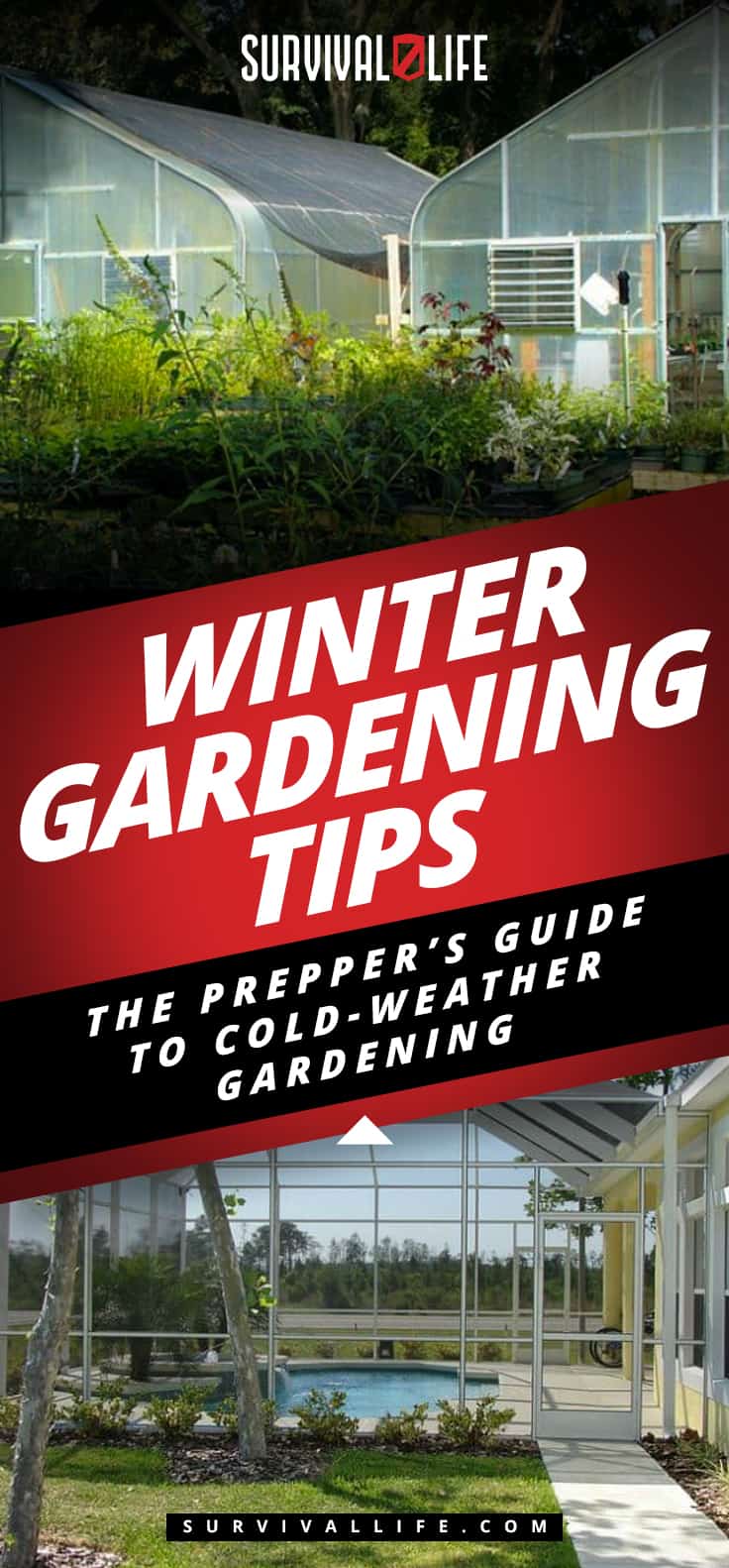The following blog post Winter Gardening Tips: The Prepper’s Guide To Cold-Weather Gardening See more on: http://www.totalsurvival.net/
Defy the odds with these winter gardening tips and techniques, and continue growing your own food even on snowy weather and freezing temperatures!
In this article:
- Winter Gardening Is Feasible
- The Perks of Winter Gardening
- Winter Gardening Tips for Preppers
- Winter Gardening Do's and Don'ts
The Prepper's Guide to Winter Gardening
Winter Gardening Is Feasible
Just because the weather's cold doesn't mean you have to stop growing your own food. Well, people use to think that way just a century ago, so vitamin deficiency was prevalent with the absence of fresh greens and fruits. Now, we've come a long way and are able to grow beyond the growing season with a few techniques you will find in here. Every survivalist is aware of the implications of fresh fruit and vegetables for health and survival.
Anyone can still grow a number of plants, vegetables, herbs, and flowers in cold and even freezing temperatures. In fact, maintaining a winter garden is very beneficial. It helps not only the gardener himself but also the environment. There are many winter gardening techniques to help you grow food any time of the year. The cold and frost of winter should not be a hindrance to get your green thumb flexed.
The Perks of Winter Gardening
One interesting advantage of winter gardening is that it helps us become healthier. Gardening is a form of exercise. During winter, people tend to avoid the chilly outdoors and choose to spend the whole day snuggling under the sheets. If you are busy gardening, you have no choice but to get out, be active, and look after your plants.
Survivalists and homesteaders are some of the most practical people around. It is definitely pleasing for them to know that growing their own food through winter keeps the food fresh and their savings untouched. Relatively, gardening in winter can also uplift the gloomy feeling that some people experience in very cold weather. Planting flowers can give additional color and fragrance to the white and bland color of snow.
Winter Gardening Tips for Preppers
Gardening in winter months is an amazing survival skill you can get trained at in case SHTF. These winter gardening tips and techniques will help you be successful at it. Find out how to grow vegetables indoors and even outdoors with these tips.
1. Know Your Hardiness Zone
Gardeners, preppers, and survivalists are some of the most stubborn people I know. Yet, you can only stretch your luck so far, especially in winter gardening. Timing is the key to growing fruits and vegetables in winter and of the course, the rest of the insightful gardening tips here.
You can determine your hardiness zone with a little search on the internet. Find your location on the map, and you can determine which plants or vegetables you can grow beyond the season.
2. Grow Hardy Plants for the Cold Months
Cold hardy vegetables are varied and plentiful more than you think they are. For indoor gardening, you will have success growing non-cold hardy veggies with the right environment or support. Here are a few cold-hardy vegetables:
- Lettuce
- Kale
- Collard Greens
- Snow Peas
- Swiss Chard
- Brussels Sprouts
- Kohlrabi
- Turnip
- Carrots
- Cauliflower
- Broccoli
Vegetables like Brussels sprouts and collard greens are better harvested after a light frost. You will find them better-tasting with a light frost touch. You can continue growing herbs indoors like basil, parsley, spring onions, rosemary, tarragon, and thyme.
3. Start Your Own Seeds Indoors

It is a great idea for survivalists or preppers to collect, save, and start their own seeds. This is especially a good thing when you are winter gardening. You get to control the elements or environment for your plants from seed to harvest. Saving seeds is a fantastic skill a survivalist should be good at. Seeds are also a food you can count on since they are some of the most long-storing food items.
Starting seeds are also cheaper than when you buy seedlings. You also get to recycle containers around your home for starting seeds. When starting seeds for winter gardening, gardening beginners can refer to seed packets. Learn to calculate the growth period of a plant variety to know when you can start seeds and when you can possibly harvest. This way, you can determine the growing methods you can apply for winter gardening.
4. Use Growing Season-Extenders
- Cloche are mini high tunnels which help protects plants from wind and frost.
- Container gardening is pretty much like raised beds, only limited in space but which you can move in and out of your home if the weather permits.
- Cold frames are raised bed structures with a protective cover or glass where your plants can be better exposed to the sun.
- Raised beds are growing structure where the temperature is warmer than on the ground.
- Indoor grow lights are artificial lights to simulate the effect of the sun on plant growth.
- Greenhouse or high tunnel can be more expensive, but it means you can grow more food in a controlled environment
- Indoor gardening makes use of the controlled environment inside the house for growing plants.
- Mulching helps protect the roots of the plants from frost.
- Indoor hydroponic garden allows you to grow more indoors without soil.
5. Maintaining Your Winter Garden
Sunlight is limited during the winter months and getting much of it will be the top priority when winter gardening. Whichever of these season extenders are you using, make sure they are located in areas where they can receive the most sun.
When growing indoor vegetables in winter, make use of your south-facing windows to let the sunshine cover your plants. Keep your plants moist but never wet or saturated. Better yet, use a mist spray when watering your plants and make sure to cover the base area or the roots.
Winter Gardening Do's and Don'ts
- Use organic fertilizer.
- Do moisten your soil before planting and mulch after.
- Do smother your plants in organic mulch.
- Don't replace your native soil. If you have to, make sure you've done necessary tests to determine its pH and drainage, but if you've long been growing in that soil, chances are your plants are better adapted to it.
- Don't cultivate on wet soil. You will have issues with the drainage since working on wet soil will compact the particles and take out air spaces.
- Avoid using concrete sand, peat moss, or pine bark for mulching. Treated mulching materials may prove to be problematic for winter gardening.
- Don't use fertilizers, insecticides, and herbicides with chemicals in them. I guess every prepper knows the danger that comes with toxic chemicals.
Save this infographic for later!

Gardening in the winter is tricky yet very satisfying. You just have to know what needs to be done and what techniques to use to successfully grow a fruitful and a beautiful garden. We hope that these winter gardening tips will keep you busy and productive throughout the cold season!
If you have some winter gardening tips and tricks up your sleeves you wish to add, please let us know in the comments section!
Up Next: Winter Survival | What To Do When The Heat Goes Out
Go to our Survival Life Store to shop some of our favorite self-defense tools and gear. Shop here.
Follow us on Facebook, Instagram, Twitter, Tumblr, and Pinterest!

Editor’s Note: This post was originally published on November 4, 2016, and has been updated for quality and relevancy.
This Article Was First Found at survivallife.com Read The Original Article HereCheck Out The Post Here: Winter Gardening Tips: The Prepper’s Guide To Cold-Weather Gardening

No comments:
Post a Comment